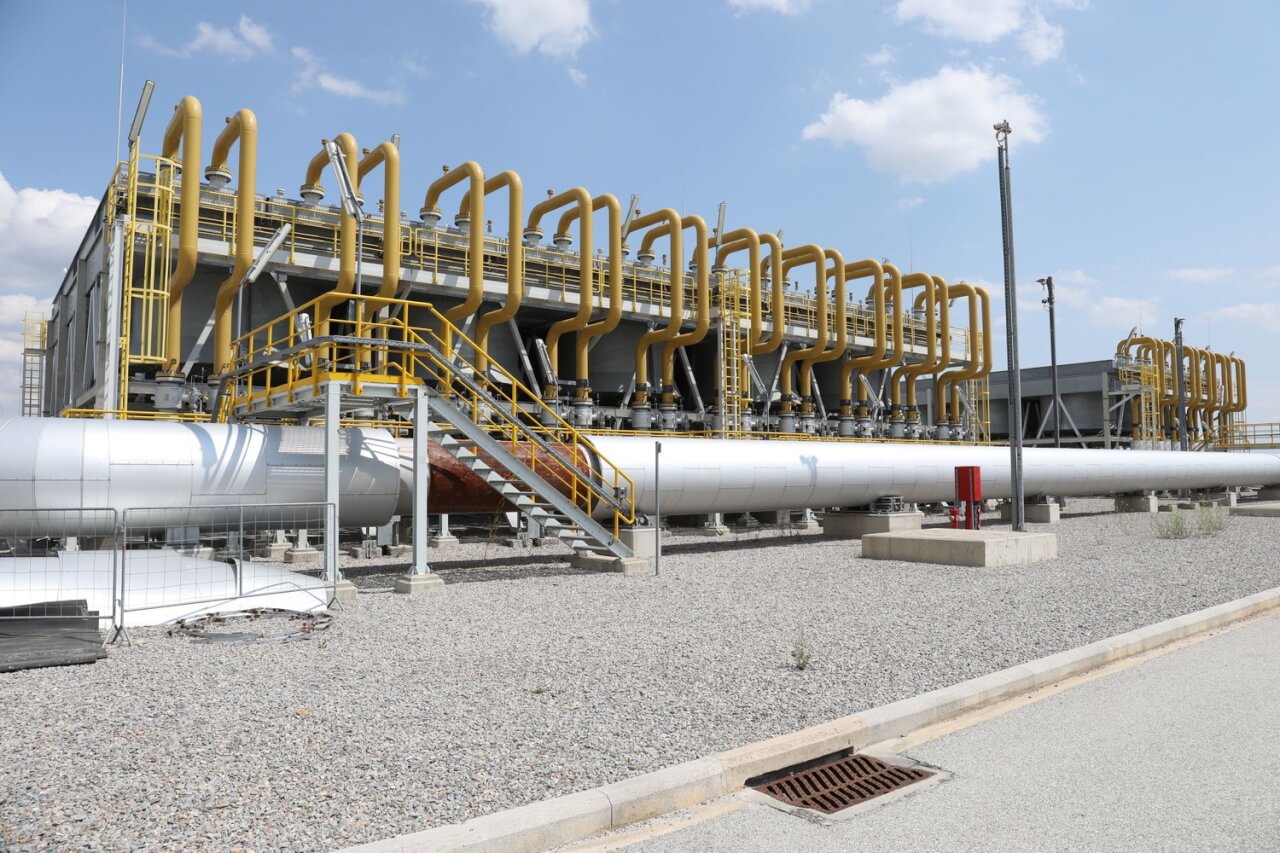Up to 2024, a spate of discoveries and a recent pivot on the part of oil majors away from green energy back towards fossil fuels triggered a boom in oil & gas exploration and development. Records were being broken in deepwater extraction. However, tariffs introduced by the USA in April 2025 have damped growth expectations.
By James Chater
Outlook
Prior to April 2025, the IEA had been forecasting that world oil demand growth would accelerate from 840 kb/d in 2024 to 103.8 mb/d in 20251. However, this prediction was upended by US trade tariffs introduced in April 2025, which sent oil prices plummeting and plunged world trade into uncertainty. In the same month, the IEA revised its growth forecast for 2025 down to 730 kb/d2. As the IEA itself acknowledges, oil markets are in for a “bumpy ride”, making any predictions prone to “considerable uncertainties”. However, there has been no drop in demand, just a drop in demand growth.
Indeed, at a time of growing geopolitical tension, and despite a rapidly unfolding climate crisis, green energy is not going to replace fossil fuels any time soon. Oil and gas companies such as BP are even reducing their green energy investments, returning to their core business. Oil production and consumption are still increasing, despite the very rapid growth in green energy production, especially solar and wind. Despite a rapid surge in renewable energy capacity, demand for fossil fuels remains increasing. However, this demand is primarily coming from the petrochemical industry, not the electricity sector.
Drilling deeper
Investments in ultra-deep projects are surging, partially driven by technological developments in robotics and AI. Records are being broken in South America and Africa (Table 1). Offshore Columbia, permission has just been granted for a well that will extend to a record-breaking 3,900m below sea level. Using new drilling technology that operates at 20,000psi, Chevron is frontiers at its Anchor project in the Gulf of Mexico, where reserves extend down to 10,400m. Production at the Anchor FPU started in August 2024, and for the time being, the wells extend to about 1,524m. Total is drilling down to 3109m in Namibia (Nara IX and Mangetti IX). China is setting up an organisation to search for ultra-deep oil and gas reserves and extract non-conventional resources.
Did you know?
- With a population of only 791,000, the tiny Caribbean state of Guyana has one of the largest oil reserves per capita in the world. It will one day become the fourth-largest offshore oil producer, ahead of Qatar, the United States, Mexico and Norway. If handled correctly, the oil wealth will make this impoverished nation one of the richest in the world.
- The recent discovery of oil in Antarctica has opened Pandora’s box. The frozen continent is off limits to exploration for financial gain. The oil, said to be double Saudi Arabia’s known oil reserves, was discovered in the Weddell Sea, part of the British “territorial interest” in the region.
- The USA has recently indicated it may leave the International Energy Agency (IEA).
Table 1. Deepwater record breakers.
| Date | Name, description | Location | Companies | Depth below sea level (metres) |
| 2010 (started) | Perdido, floating oil platform | Gulf of Mexico | Shell | 2,450 |
| 2013 (drilled) | Well 1-D-1 in block KGDWN-2005/1 | Krishna, Godavari Basin, India | ONGC | 3,174 |
| 2016 (drilled) | Raya 1 oil well | Uruguay | Total, Exxon Mobil | 3,400 |
| 2021 (drilled) | Ondjaba 1, wildcat | Block 48, Angola | Total | 3,628 |
| 2024 (permission granted) | Komodo 1 | Columbia | Occidental, Ecopetrol | 3,900 |
Upstream
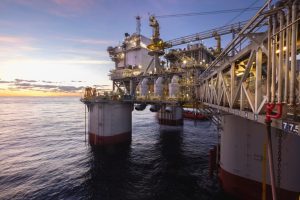
In the USA, the effect of tariffs is likely to be offset by President Trump’s recent budget bill, which cuts tax breaks for renewables while lifting restrictions on fossil fuel exploitation. Oil & gas production in the Gulf of Mexico has been rising: Anchor started up in August 2024, and as of 12 September 2024, 12 new fields were expected to start up over the next two years3. In South America, apart from the Columbia deepwater project, Exxon Mobil plans to drill 30 wells at Hammerhead, its seventh project offshore Guyana. However, the drop in the oil price has triggered a cut in shale oil rigs. Oil prices are hovering at just under USD 70, meaning shale oil is barely profitable.
Africa has also been an offshore hotspot. The big news is the return to production of Libya, which issued its first exploration tender since the 2011 war. BP and Shell have both signed agreements with Libya’s National Oil Corp. BP is to explore and develop hoping to open up new the Sarir and Messla oilfields; Shell is collaborating with Eni on gas exploration. In Ghana, production is increasing, with companies such as Tullow Oil, Kosmos Energy and Eni taking the lead. In Algeria, Eni and Sonatrach agreed to explore and develop the Zemoul El Kbar region. In Egypt, the government has signed deals with Shell, Petronus Gas and Cheiron Energy. In Ivory Coast, Eni’s FPSO for the third phase of its Baleine deepwater oil & gas field could be agreed by mid-2025.
Downstream
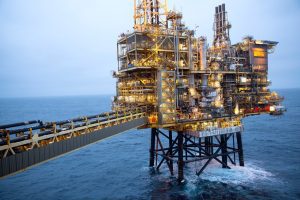
Demand for oil & gas from the petrochemicals industry has been accelerating, with refinery building and expansion surging. The most activity is occurring in Asia and Africa. India is leading refinery builds, accounting for around 45 % of the 81 projects launching from 2023–74. Capacity expansions are taking place at Vadinar, Panipat, Paradip and Gujarat. In Mongolia, Mongol Refinery has reached the EPC phase, and commissioning is envisaged for 2026. In China Sinopec, PetroChina, CNOOC and Sinochem have all ramped up production as of June 2025.
A capacity surge is also happening in Africa. Dangote refinery, Nigeria, is increasing imports from Brazil and Equatorial Guinea. An EPC has been signed for a refinery and hydrocracker at Lobito, Angola, with completion expected in 2026 or 2027. In the UK, three projects related to the green transition are under way: Neste Porvoo (Finland) and Shell Pernis (Netherlands) are integrating chemical recycling, electrolysers, carbon capture, and SAF/renewables units, while Scotland’s Grangemouth refinery has been closed pending the implementation of the government-backed Project Willow, to include biofuels, and hydrogen.
CCUS (CCS)
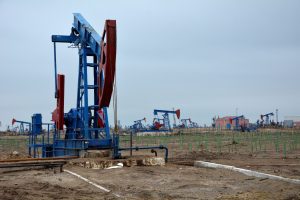
Carbon capture, utilisation and storage (CCUS or CCU) has become more cost-effective as the price of emissions soars and the climate emergency becomes more apparent. In 2024 Chevron, Equinor, and Total Energies started Northern Lights, the world’s first CO2 transport and storage project open to industry, located off Norway. In June, the same three companies began drilling for the Bayou Bend CCS project in SE Texas, USA.
Equinor is also progressing two projects in the United Kingdom, Northern Endurance Partnership (NEP) and Net Zero Teesside Power (NZT Power). Located in Teeside, they are the first two carbon capture and storage (CCS) projects to be realised in the UK. Inpex has announced that the Bonaparte CCS Assessment Joint Venture has been awarded Major Project Status by the Australian government.
IT and AI
Recent IT breakthroughs, in combination with AI, will lead to improved efficiency in deepwater oil & gas projects. Chevron’s innovative technology in its Anchor development helps evaluate exploration prospects and thus target reservoirs more accurately. The technology allows a clearer picture of the subsurface. Developed in collaboration with Microsoft, “extended FWI” (full waveform inversion) can deliver higher-quality seismic images. Sound waves are generated that travel through the layers of the earth and reflect back to the surface to generate a 3D image of the subsurface. This imaging is similar to medical ultrasound, but on a much larger scale. In the future, FWI will be assisted by AI to save time and improve quality.
AI is already being used in Seeq’s collaboration with Equinor, helping the oil company to optimise production and improve energy performance. Seeq’s AI platform taps into vast amounts of historically underused data to improve operations and profitability.
Materials
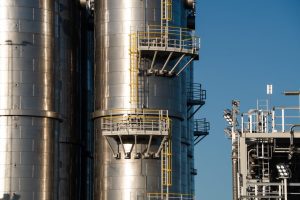
In recent years, duplex and superduplex grades have been increasingly applied as ever deeper reservoirs are tapped, with higher pressures and hotter environments that require the most resistant grades. Alleima (at that time still Sandvik) developed SAF™ 2507, which soon became sought after in subsea umbilical tubing. Then in 2024 it went a stage further, introducing SAF™ 3007 as an alternative for umbilicals. The new grade offers the same benefits but with higher yield strength, simplified welding and easier handling due to reduced wall thickness.
Alleima’s new grade Sanicro 35, launched five years ago, has become a popular choice in refineries as a cost-competitive alternative to nickel alloys. It is applied in the seamless tubes of heat exchangers in chemical plants, and bio and oil refineries. Recently, it was selected in seven crude unit air coolers at a refinery on the US Gulf Coast, for its superior corrosion resistance in ammonium chloride salts.
The surging oil & gas market has resulted in several orders for Vallourec (tubing for the National Oil Company of Abu Dhabi; contracts with CNOOC and PetroChina for OCTGs in Iraq), Nippon Steel/Sumitomo (OCTG for Equinor) and Tubacex (pipes for Petrobras). Super duplex valves from Oliver Twinsafe were delivered to the Shell Jackdaw platform in the North Sea.
The rising focus on CCUS is also driving demand for stainless steel tubes and pipes, especially in mild austenitic grades.
Conclusion
Demand for stainless steels has been robust, but the US tariffs cast considerable uncertainty on the future. However, demand for oil & gas is still increasing, albeit at a slower rate.
References
- https://www.iea.org/reports/oil-market-report-march-2025.
- https://www.iea.org/reports/oil-market-report-april-2025.
- https://jpt.spe.org/eia-new-projects-poised-to-add-231-000-b-d-to-us-gulf-of-mexico-output-by-2025?utm_source=chatgpt. com, citing the US Energy Information Administration.
- https://www.globaldata.com/media/oil-gas/india-dominate-upcoming-crude-oil-refinery-projects-asia-2027-reveals-globaldata/.
About this Featured Story
Appearing in the August 2025 issue of Stainless Steel World Magazine, this Featured Story is just one of many insightful articles we publish. Subscribe today to receive 10 issues a year, available monthly in print and digital formats. – SUBSCRIPTIONS TO OUR DIGITAL VERSION ARE NOW FREE.
Every week we share a new Featured Story with our Stainless Steel community. Join us and let’s share your Featured Story on Stainless Steel World online and in print.



